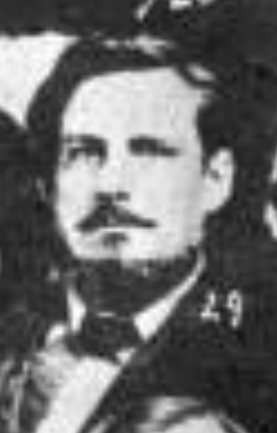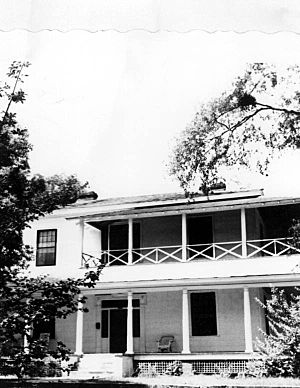Samuel Barron Stephens facts for kids
Quick facts for kids
Samuel Barron Stephens
|
|
|---|---|
 |
|
| Member of the Florida House of Representatives from the Gadsden district |
|
| In office 1848–1848 |
|
| Member of the Florida Territorial Council from the Gadsden district | |
| In office 1841–1842 |
|
| Personal details | |
| Born | 1814 New Bern, North Carolina, US |
| Died | August 4, 1882 (aged 67–68) Quincy, Florida, US |
| Political party | Whig |
| Spouse | Caroline Booth |
| Children | 2 |
| Education | University of North Carolina at Chapel Hill |
| Military service | |
| Allegiance | |
| Branch/service | |
| Years of service | 1836–1838 (USA) 1865 (CSA) |
| Rank | |
| Unit | Florida Militia |
| Battles/wars | Second Seminole War American Civil War |
Samuel Barron Stephens (born in 1814, died August 4, 1882) was an important American lawyer and politician. He played a big role in the early history of Florida. He helped shape Florida's laws and government.
Contents
Samuel Barron Stephens: A Florida Leader
Early Life and Law Career
Samuel Barron Stephens was born in New Bern, North Carolina in 1814. He went to the University of North Carolina at Chapel Hill. He graduated in 1832. After college, his family moved to the new Florida Territory. They settled in Gadsden County.
Stephens became a very successful lawyer in Quincy, Florida. He soon worked as the city's lawyer and also the county's lawyer.
Military Service
In 1836, Stephens joined the Florida Militia. This was during the Second Seminole War. He served as a first lieutenant and led a company of soldiers. His company finished their service in 1838.
Later, during the American Civil War, Stephens served in the Confederate States Army. He fought in the Battle of Natural Bridge in 1865. He was a lieutenant during this battle. By the end of the war, he was promoted to the rank of colonel.
Political Journey
Stephens was a delegate at the Florida Constitutional Convention of 1838. This means he helped write Florida's very first constitution. He was a member of the Whig Party.
In 1841, he was elected to the Florida Territorial Council. He represented Gadsden County and served until 1842. In 1848, he was elected to the Florida House of Representatives. He served one term there.
In 1849, the Florida House of Representatives chose him for a new role. He became the solicitor for Florida's Middle Judicial Circuit Court. A solicitor is like a lawyer who represents the government.
In 1861, Stephens was part of the Florida Secession Convention. This was a meeting where Florida decided whether to leave the United States. Stephens believed that states should have the right to make their own decisions. He voted for Florida to leave the Union. He also signed the paper that made Florida's decision official.
Community Involvement and Later Life
Stephens was also a well-known Freemason. This is a social and charitable organization. In 1869, he became the Grand Master of the Grand Lodge of Florida. This was the highest position for a Mason in Florida at that time.
Samuel Barron Stephens passed away on August 4, 1882, in Quincy, Florida.
Family and Home
Samuel Stephens was married to Caroline Booth. They had two daughters named Fannie and Caroline.
His wife, Caroline, was related to William Fitzgerald. William Fitzgerald was a captain in the American Revolutionary War. Stephens was also related to the Kenan political family from North Carolina. He was also a descendant of James Barron. James Barron was a commodore in the United States Navy. He commanded the USS Chesapeake ship in 1807.
Stephens's house in Quincy is called the Colonel Samuel B. Stephens House. It was built between 1842 and 1850. Today, it is known as one of Quincy's historic homes.


